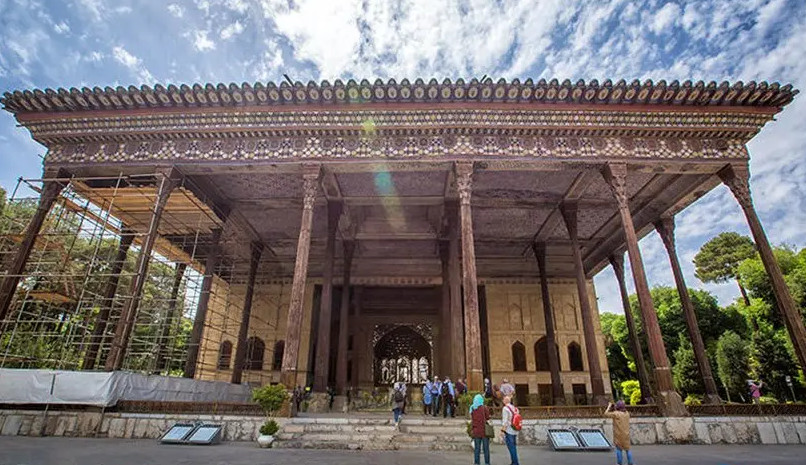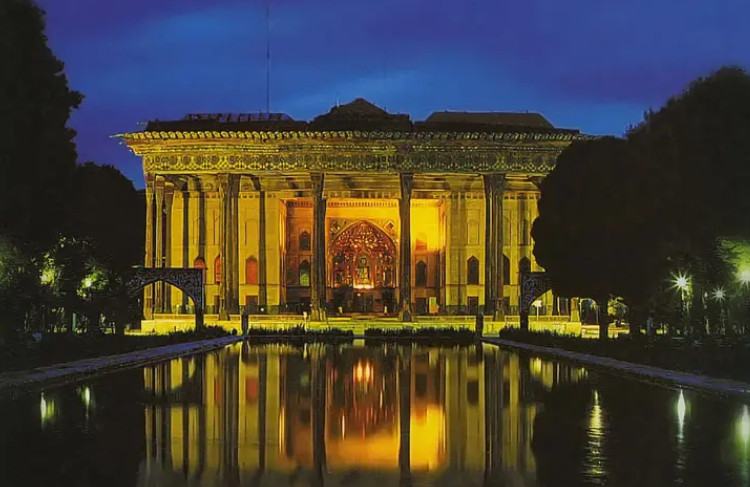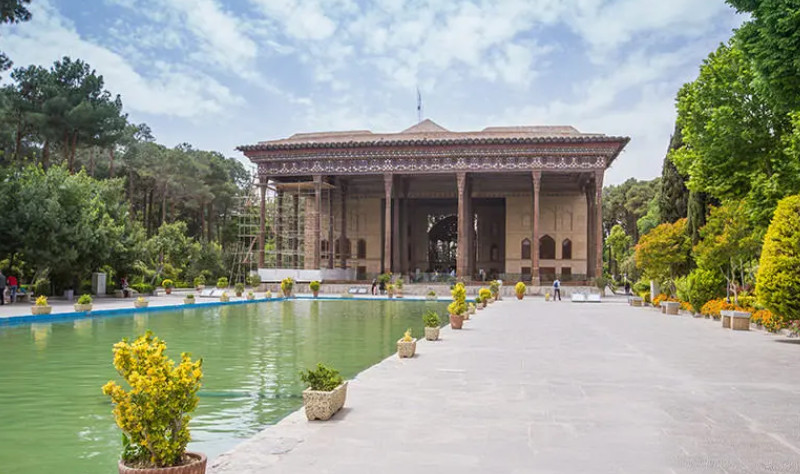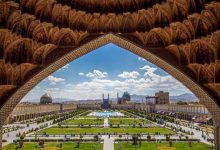Chehel Sotoon Palace + video
Nestled amidst the ancient city of Isfahan, in Iran, the Chehel Sotoon Palace stands as a magnificent testament to Persian architectural prowess and the artistic endeavors of the Safavid era. Translated as the “Palace of Forty Columns,” this monument is not only an architectural marvel but also a repository of Persian art and history.
IRAN – Walking in the Chehel Sotoon Palace,400-year-old architectural masterpiece in Isfahan :
Historical Significance
The construction of Chehel Sotoon Palace began under the reign of Shah Abbas I in the early 17th century, during the Safavid dynasty. It was designed to serve both as a residential palace and a place for hosting official functions and receptions. Given its primary role as a reception hall, the palace, in its design and décor, was meant to impress, to showcase the might and grandeur of the Safavid empire.
However, the name “Palace of Forty Columns” can be a bit misleading for those approaching the edifice for the first time. In actuality, there are only twenty wooden columns supporting the entrance pavilion. The name is derived from the reflection of these columns in the long pool in front of the palace, which creates an illusion of there being forty columns. This reflection serves as a symbolic representation of the interplay between reality and illusion, a theme recurrent in Persian literature and philosophy.

Architectural Excellence
In terms of architecture, the Chehel Sotoon Palace is a symphony of Persian and Islamic styles. The main hall boasts a lofty wooden ceiling adorned with intricate patterns and designs, exemplifying the craftsmanship of the era. The slender wooden columns, which are a signature of the palace, not only support the structure but are also intricately carved, offering an insight into the meticulous detail work of Safavid artisans.
The layout of the palace embraces the traditional Persian concept of having a central hall surrounded by chambers and rooms. This centralization aids in creating a focal point, both architecturally and artistically. Furthermore, the open pavilion layout, combined with the surrounding garden and pool, integrates nature into the architectural design, a hallmark of Persian aesthetics.

Artistic Imprint
Beyond its architectural allure, the palace is a canvas of significant historical frescoes and murals. These paintings give glimpses into the Persian history of the time, from battles to courtly receptions.
One of the most famous murals depicts the Battle of Chaldiran, where the Safavid Persians faced the Ottoman Turks in 1514. This painting not only provides a historical account but is also imbued with subtle nuances. The positioning of the characters, the play of colors, and the narrative focus all offer insights into how the Safavids perceived that event.
Another prominent mural portrays the reception of King Humayun by Shah Tahmasp, showcasing the camaraderie and diplomatic ties between the Safavid dynasty and the Mughals of India. The detailing in their attire, the ambiance of the court, and even the expressions of the attendees give a vivid picture of the grandeur and ethos of the time.

Gardens and Landscape
No account of Chehel Sotoon would be complete without acknowledging its gardens. As with many Persian edifices, the gardens play a crucial role in the overall design and ambiance of the place. These gardens, designed based on the Charbagh concept (a Persian-style garden layout), bring in an element of tranquility and harmony. With meticulously manicured lawns, strategically planted trees, and water features, the garden complements the palace, creating a serene oasis amidst the city.
The pool in front of the palace, apart from its reflective quality that doubles the columns, also serves as a cooling mechanism. In the arid climate of Isfahan, water features are not just aesthetic but functional elements in architecture. The evaporation from the pool cools the surrounding air, providing relief from the sweltering heat, especially during summer.

Cultural and Modern Day Relevance
Today, Chehel Sotoon Palace stands not just as a historical monument but also as an emblem of Persian identity and pride. It offers a window into Iran’s rich past, reflecting the peak of its cultural, artistic, and architectural endeavors. Tourists and historians from across the globe are drawn to this palace to immerse themselves in its beauty and to decipher the stories etched on its walls.
Moreover, the palace serves as a source of inspiration for modern architects and artists, who are continually intrigued by its fusion of form, function, and aesthetics. It is a living testament to how spaces can be designed to resonate with their environment, offer utility, and still be awe-inspiring.
In a rapidly globalizing world, where architectural designs often run the risk of becoming monolithic and devoid of cultural context, the Chehel Sotoon Palace stands as a beacon, reminding us of the beauty that arises when architecture is deeply rooted in its cultural and historical milieu.


